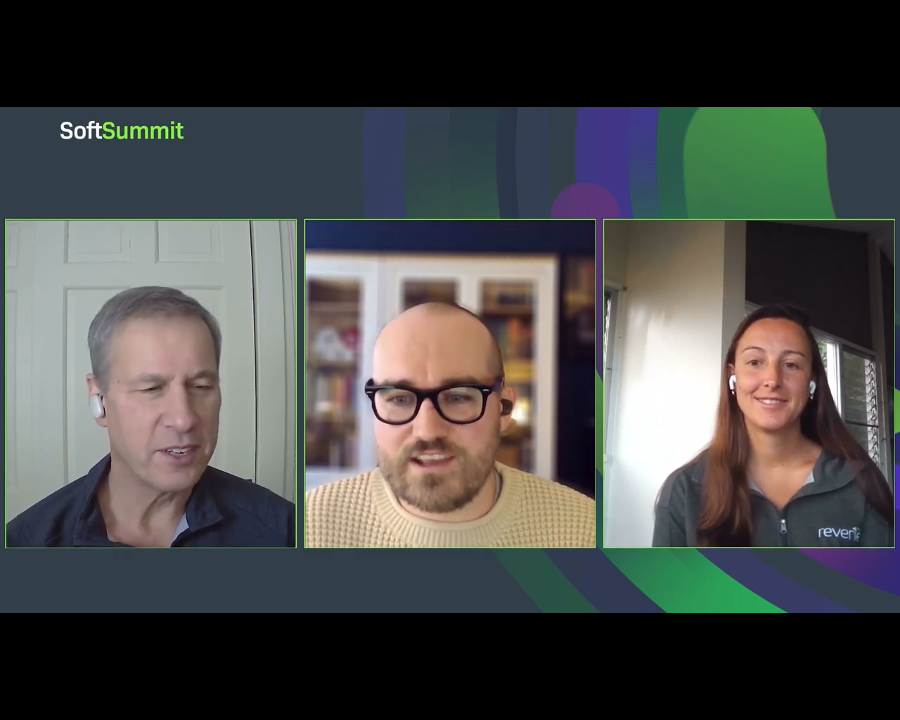Webinar
Generating Revenue and Growing Customers from Software Piracy
Discover how Bentley Systems turns piracy into profit by converting misuse into long-term customers through data-driven license compliance strategies.
Original Air Date: April 26, 2023
Overview
If you're a software producer looking to turn piracy into profit, this webinar is a must-watch. Join John Hollows, Senior License Compliance Operations Manager at Bentley Systems, and Erin Barrett, Revenera's Program Manager for Bentley’s Data Success Team, as they reveal how Bentley transformed software misuse into a powerful customer acquisition engine. You’ll hear how Bentley leveraged anti-piracy telemetry and internal data to uncover hidden revenue opportunities and build long-term customer relationships.
This session dives deep into the real-world impact of license compliance programs, including surprising global trends, repeat offender patterns, and how Bentley tailors its approach across regions and product lines. Learn how the team measures success—not just in revenue, but in renewals and customer satisfaction—and how they’ve scaled their program across 30+ brands.
Whether you're just starting to explore compliance or looking to optimize an existing program, this webinar offers actionable insights, proven strategies, and a compelling vision for the future of software monetization. Don’t miss the chance to learn from Bentley’s journey and apply these lessons to your own business.
Recap
Key Themes and Takeaways
Bentley Systems’ Journey into License Compliance
Bentley Systems began its license compliance efforts with a pilot program focused on one of its major brands. The success of this initiative quickly led to expansion across its portfolio of 30+ software products. The company’s goal was not just to stop piracy, but to convert misuse into meaningful customer relationships and long-term revenue streams.
The Role of Anti-Piracy Telemetry
Telemetry data became a cornerstone of Bentley’s compliance strategy. By capturing real-time signals of unauthorized software use, Bentley was able to identify potential customers and engage them constructively. This data-driven approach proved far more effective than relying solely on whistleblowers or manual investigations.
Measuring Success Beyond Revenue
While increasing revenue was the primary goal, Bentley emphasized the importance of customer retention and satisfaction. One of their key metrics was renewal rates from settlements indicators that infringers were becoming loyal, paying customers. Bentley’s flexible licensing models helped support these long-term relationships.
Global Trends in Software Misuse
The webinar highlighted surprising geographic trends in piracy. Bentley detected telemetry from 193 countries and dependencies, including unexpected regions like Vanuatu and Palau. They also observed regional preferences for specific Bentley products, often tied to the origin of acquired companies.
Repeat Offenders and Behavioral Insights
About 25% of companies Bentley settled with continued to show piracy signals. This trend underscored the importance of clear communication during settlements and the need for ongoing monitoring. Some repeat offenses were due to improper cleanup, while others reflected a blatant disregard for compliance.
Legal Escalation and Partner Strategies
Bentley’s approach to legal escalation varied by region. In some countries, all compliance actions were routed through partners due to local legal frameworks. In others, Bentley handled cases in-house or selectively escalated. The company emphasized the value of its global partner network in navigating complex legal landscapes.
Success in Challenging Markets Like China
China was identified as a high-priority region due to its scale and piracy culture. Bentley found success by combining in-house resources, strong local partnerships, and even government engagement. Their strategy focused on the opportunity rather than the difficulty of enforcement in this market.
Future Vision: Data Synergy and Program Expansion
Looking ahead, Bentley aims to integrate anti-piracy telemetry with internal data sets like entitlement and usage data. This synergy will help optimize their compliance efforts and scale the program across all brands. The team is focused on continuous improvement and unlocking new revenue opportunities.
Advice for Other Software Vendors
John Hollows shared practical advice for companies considering a license compliance program. He emphasized that many barriers to entry have disappeared, thanks to mature technologies and well-established legal playbooks. He also dispelled fears of customer backlash, noting that most engagements are constructive and lead to positive outcomes.
Speakers

John Hollows
License Compliance
Bentley Systems

Vic DeMarines
VP of Product Management for Software Monetization
Revenera

Erin Barrett
Manager, Data Success
Revenera
Frequently Asked Questions
Software license compliance ensures that users are operating software within the terms of their license agreements. For producers, it’s critical to protect intellectual property, prevent revenue loss, and maintain fair usage. A strong compliance program can also uncover new customer opportunities by identifying unauthorized use and converting it into legitimate sales. It’s not just about enforcement—it’s about strategic growth.
Telemetry data provides real-time insights into how and where software is being used, including unauthorized installations. By analyzing this data, software vendors can detect patterns of misuse, geographic hotspots, and even repeat offenders. This allows for targeted engagement with infringers and helps convert them into paying customers. It’s a scalable and efficient way to uncover hidden revenue.
Instead of treating piracy solely as a legal issue, software producers can use it as a gateway to new customer relationships. Engaging infringers with flexible licensing options and clear communication often leads to long-term contracts and renewals. This approach not only recovers lost revenue but also builds brand loyalty and expands market reach. It’s a win-win for both vendor and user.
Success is typically measured by revenue recovered, new customers acquired, and renewal rates of converted users. High renewal rates indicate that former infringers see value in the product and are willing to continue paying. Other metrics include geographic coverage, repeat offense reduction, and partner engagement effectiveness. These KPIs help refine and scale the program over time.
Software piracy is a global issue, with high activity in regions like China, Russia, and India. However, telemetry data has revealed misuse in unexpected places, including small island nations. Understanding regional trends helps vendors tailor their compliance strategies and prioritize markets with the highest potential for recovery and growth. Localization and legal frameworks also play a role.
Repeat offenders often signal gaps in communication or cleanup during initial settlements. Vendors should ensure clear terms are set post-engagement and monitor telemetry for ongoing misuse. Some cases may require escalation or legal involvement, especially if the behavior is deliberate. A structured follow-up process helps maintain compliance and protects long-term revenue.
Not always. Many cases can be resolved through direct engagement or partner-led negotiations. Legal escalation is typically reserved for complex or high-value cases, or when local laws require it. A flexible approach—balancing in-house efforts with regional partners—can be more effective and cost-efficient. The goal is resolution, not confrontation.
Newly acquired products often come with their own licensing systems and user bases. Integrating these into the company’s existing compliance framework requires assessing current usage, identifying misuse, and aligning licensing models. Early engagement with telemetry and internal data helps bring these products into the fold and ensures consistent enforcement across the portfolio.
Advanced telemetry platforms, entitlement tracking systems, and usage analytics are key technologies in modern compliance programs. These tools help vendors detect misuse, engage infringers, and optimize licensing offers. Mature platforms have evolved to be highly reliable and scalable, making it easier for companies to launch or expand their programs without major technical hurdles.
Not if handled correctly. Most users respond positively when approached with transparency and fair licensing options. The fear of customer backlash is often overstated, especially when the engagement focuses on value rather than punishment. In fact, enforcing compliance can enhance respect for the brand and demonstrate a commitment to protecting product integrity.
Resources
Webinar
Unlock the Power of Monetization Analytics: Drive Growth, Renewals, and Customer Success
Thursday, December 4, 2025
Join us for an exclusive webinar led by industry experts, where we’ll explore how actionable analytics are transforming software monetization strategies. Secure your spot and get ready to transform your approach to software monetization.
Report
Monetization Monitor: Software Piracy and License Compliance 2026 Outlook
Revenera’s latest research report examines emerging trends in the prevalence and scope of unlicensed software usage and demonstrates how leveraging usage analytics or compliance analytics can enhance revenue recognition opportunities.
Webinar
Pricing as a Profitability Lever in the Cloud and AI Era
In this session, Paul Bland, Senior Director of Technical Product Management for Revenera, and Philip Daus, Partner at Simon-Kucher, will share actionable ideas to counter rising costs, protect profitability, and adapt your pricing for the AI era
Want to learn more?
See how you can generate new license revenue from software piracy and overuse.
